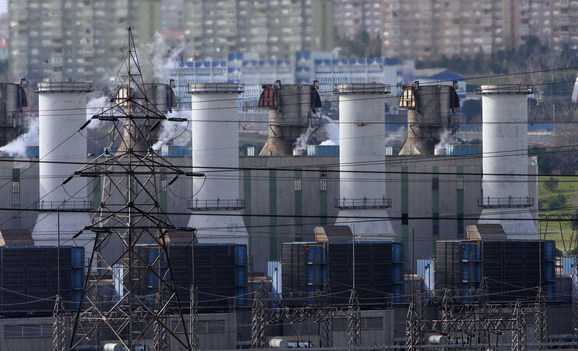By JOHN C.K. DALY
WASHINGTON, Sept. 11 (UPI) — Last month’s military conflict between Russia and Georgia over South Ossetia has cast a harsh spotlight on Western assumptions about exporting Azeri oil through neighboring Georgia and Turkey.
While the military confrontation focused Western media attention on tensions between Russia and Georgia, Azerbaijan itself remains gripped by a “frozen conflict” dating back to even before the 1991 collapse of the Soviet Union. Azerbaijan’s clashes with Armenia over the enclaves of Nagorno-Karabakh and Nakhchivan broke out in February 1988; by the time a cease-fire was signed in May 1994 ending active hostilities, thousands had been killed and wounded, while hundreds of thousands of refugees were created on both sides and the Armenian armed forces were left occupying swaths of Azeri territory, including Nagorno-Karabakh and seven neighboring districts. The volatility of the situation was instrumental in the eventual decisions of the Western consortium members to build their proposed export pipeline for Azeri oil through Georgia rather than utilize a shorter route transiting Armenia.
Now, however, there are some indications that there might yet again be movement toward a resolution of the issue. On Wednesday, after meeting with Turkish President Abdullah Gul, Azeri President Ilham Aliyev expressed hope that the Nagorno-Karabakh issue eventually could be settled. Gul’s comments had a strong economic undertone, as he told reporters, “If we settle this conflict, which I hope we will manage to do, all countries of the region will develop much faster.”
A resolution of the disputes between Azerbaijan and Armenia could give Western investors yet another export route for Caspian energy, an issue of growing concern among Western investors because of Russia’s increasing assertiveness in the region, combined with the fragility of export routes through Georgia, as demonstrated by the recent conflict. The prize is certainly tempting: The Caspian’s 143,244 square miles and attendant coastline are estimated to contain as much as 250 billion barrels of recoverable oil, boosted by more than 200 billion barrels of potential reserves, quite aside from up to 328 trillion cubic feet of recoverable natural gas. From the outset Washington’s policy has been to construct, if possible, multiple export pipeline routes, bypassing both Russia and charter “axis of evil” member Iran.
Because of the Nagorno-Karabakh dispute, however, export routes to Armenia were never considered as a viable option in 1994 after then-Azeri President Geidar Aliyev signed the “Contract of the Century” with Western energy concerns to develop Azerbaijan’s Caspian Azeri-Chirag-Guneshli fields. Consequently, the first Western export oil pipeline not under Russian control went westward through Georgia. In 1999 Baku’s export options broadened with the opening of the $600 million, 515 mile, 100,000-barrel-per-day Baku-Supsa pipeline. Azerbaijan was finally able to free itself completely from reliance on Russian export pipelines when, in May 2006, the $3.6 billion, 1,092-mile, million-barrel-per-day Baku-Tbilisi-Ceyhan pipeline opened.
The Armenians and Azeris sought to influence Washington’s decisions on the region; political agitation by the Armenian-American lobby resulted in the inclusion in 1992 of Section 907 in the U.S. Freedom Support Act, which banned any direct U.S. aid to the Azerbaijani government as punishment for its blockade of Armenia. It was only in January 2002 that President George W. Bush waived the legislation as a reward for Azeri support of the United States following the Sept. 11, 2001, terrorist attacks.
The Bush administration, in one of its first foreign policy initiatives, attempted to break the diplomatic impasse between the two Caucasian nations. In April 2001, even before the waiver of Section 907, Secretary of State Colin Powell’s first major foreign initiative was to try to resolve the Nagorno-Karabakh dispute during a summit in Key West, Fla., where he met with Azeri President Geidar Aliyev and Armenian President Robert Kocharyan. But the meetings, which were held by the Office for Security and Cooperation in Europe Minsk Group co-chairs France, Russia and United States, proved fruitless.
There now seems to be a genuine chance for breaking the diplomatic logjam, especially as Turkey and Armenia are slowly edging toward restoring relations, as well, in the wake of last week’s “soccer diplomacy,” which saw Gul fly to Yerevan to attend a Turkish-Armenian football match, where he held talks with Armenian President Serzh Sargsyan.
Gul is convinced that new opportunities have opened for settling the Nagorno-Karabakh dispute. He pragmatically informed journalists that a resolution of the issue could allow all countries of the region to get involved in major energy transportation projects, noting, “If the mood of cooperation prevails in the region over hostility, it will serve the interests of all countries in the Caucasus.” Ankara is certainly thinking big; Turkish Minister for Energy and Natural Resources Hilmi Guler, currently in Baku to attend a conference on “oil and gas potential in Azerbaijan and Turkmenistan” organized in Azerbaijan, held out optimism that one of the West’s most cherished projects, the Nabucco pipeline to bring Azeri natural gas westward, would go forward, telling reporters, “Turkey will definitely finalize the Nabucco project.”
Turkey is also pressing to resolve the Russian-Georgian dispute; on Sept. 2 Gul telephoned Bush, whom he informed about Prime Minister Recep Tayyip Erdogan’s proposal for a Caucasus Stability Platform to restore peace and stability to the region. Rather than unilaterally pushing military aid to Georgia, Washington ought to listen closely to Turkey’s diplomatic initiatives, especially if it wants to prevent any further checkmates to its policies of developing Caspian energy projects: The Kremlin is less likely to feel threatened by a friendly soccer match than U.S. naval warships sailing in the Black Sea.


Leave a Reply